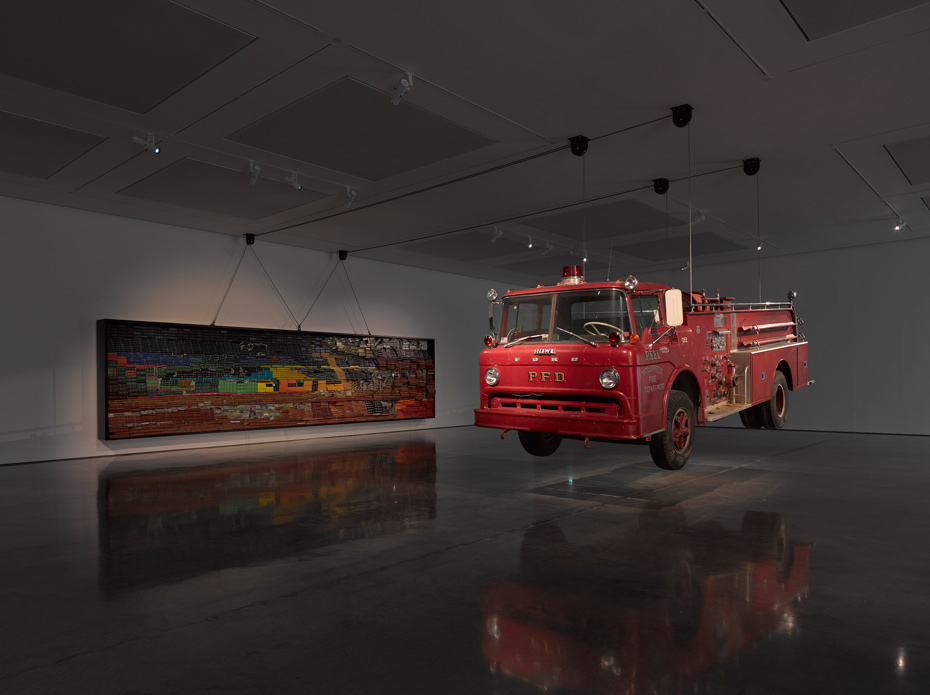Theaster Gates delivers a lesson on protest at the Whitecube Gallery

Before his ignominious and crushing defeat in the French presidential elections this year — indeed before his equally ignominious election as President — Nicolas Sarkozy served as France’s Interior Minister. Sarkozy showed characteristic tact and careful judgment when, in response to the Paris riots of 2005, (sparked when police were accused of chasing two terrified teenagers, Zyed Benna and Bouna Traore, into an electricity substation where they were ultimately electrocuted), he went to one of the troubled estates and promised to “clean out” the “scum” living in the estate with a “power hose”. For anyone familiar with the American Civil Rights movement, the imagery of blasting unruly ethnic rabble with high-powered hoses couldn’t help but evoke the frantic responses of southern police chiefs — not least the vicious Bull Connor, the commissioner of Birmingham Alabama’s suitably Robespierrean Committee for Public Safety — hammering protesters with water cannons and fire hoses. If Theaster Gates was following French politics at the time, it would certainly have resonated with him.
Power hoses and all their political and historical associations, are everywhere in Gates’ new show at the Bermondsey White Cube, titled, My Labour is My Protest.
All shows at the massive Bermondsey White Cube are big shows, but Gates’ in particular has a monumentality to it which belies the sometimes ponderous attempts by other artists to cope with the space. This capacity to be both epic and curiously weightless is embodied in a work titled Raising Goliath in which a vintage Ford fire truck is suspended from the ceiling by cables. Briefly, there is a sense of illusion about the work, but the cables from which the truck hangs are visible enough to remind you that fire trucks don’t just float around art galleries, to get them like that, it takes work. And work, and the visibility of work, is also central to the show. Near the truck is a bucket with tar and an engorged mop. Tar is everywhere in the show, thick and black and inescapable, never quite beautiful, but, oddly, deeply human. The story of Gates’ life — born in 1973 after the bleakest days of the Jim Crow era — and his father’s life as a manuallabourer tarring roofs offer a powerful window into the darkness both metaphorical and chromatic.
For a highly personal show, there is also an impressive accessibility. The compositions made with fire hoses in the South Gallery are supremely tactile. There’s also a library in the exhibition lining an entire wall of the gallery straining under the weight of books on black culture and history. It’s a show that demands attention and repays return visits (I’ve been twice and I feel like I’m only just scratching the surface). The vastness of the library is also a reminder of the difficulty of the task of viewing art, if even the superficial facts of the world are overwhelming, how will it ever be possible to see the depths of the human story that goes into the creation of a work of art? Of course it won’t, but with shows of the scale, ambition, intellect and sensitivity of My Labour is my Protest, it feels like a necessary journey just the same. Even Sarkozy could learn something from it.
.
Theaster Gates: My Labour is my Protest runs until 11 November at White Cube 144-152 Bermondsey Street, SE1 3TQ. For more information visit whitecube.com




